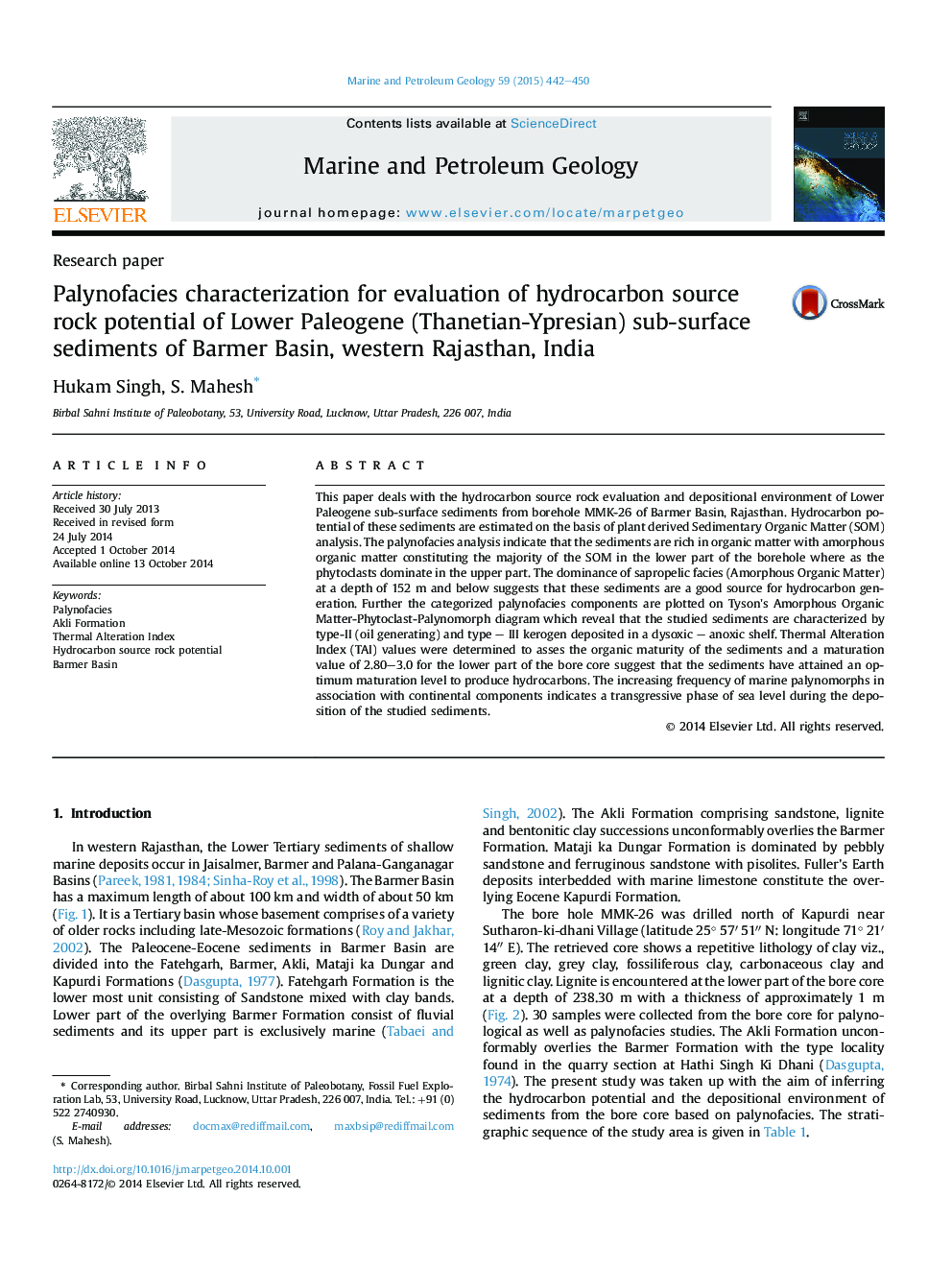| کد مقاله | کد نشریه | سال انتشار | مقاله انگلیسی | نسخه تمام متن |
|---|---|---|---|---|
| 4695632 | 1637166 | 2015 | 9 صفحه PDF | دانلود رایگان |
• Sediments with potential to generate hydrocarbon was determined by Thermal Alteration Index (TAI) analysis.
• Visual kerogen analysis reveals the presence of Type-II kerogen.
• Transgressive phase of sea level is identified based on continental and marine palynomorphs frequency.
• Palynofacies zonations reveal that the sediments were deposited in a suboxic to dysoxic shelf.
This paper deals with the hydrocarbon source rock evaluation and depositional environment of Lower Paleogene sub-surface sediments from borehole MMK-26 of Barmer Basin, Rajasthan. Hydrocarbon potential of these sediments are estimated on the basis of plant derived Sedimentary Organic Matter (SOM) analysis. The palynofacies analysis indicate that the sediments are rich in organic matter with amorphous organic matter constituting the majority of the SOM in the lower part of the borehole where as the phytoclasts dominate in the upper part. The dominance of sapropelic facies (Amorphous Organic Matter) at a depth of 152 m and below suggests that these sediments are a good source for hydrocarbon generation. Further the categorized palynofacies components are plotted on Tyson's Amorphous Organic Matter-Phytoclast-Palynomorph diagram which reveal that the studied sediments are characterized by type-II (oil generating) and type – III kerogen deposited in a dysoxic – anoxic shelf. Thermal Alteration Index (TAI) values were determined to asses the organic maturity of the sediments and a maturation value of 2.80–3.0 for the lower part of the bore core suggest that the sediments have attained an optimum maturation level to produce hydrocarbons. The increasing frequency of marine palynomorphs in association with continental components indicates a transgressive phase of sea level during the deposition of the studied sediments.
Journal: Marine and Petroleum Geology - Volume 59, January 2015, Pages 442–450
